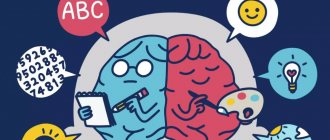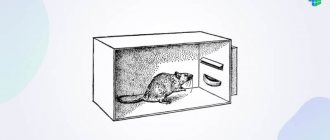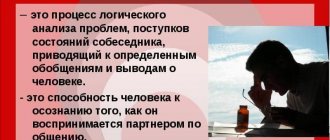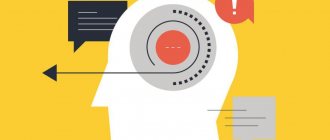THINKING, in the broad sense of the word, is a synonym for knowledge, especially its higher forms, relatively independent of direct sensory perception; in the narrow sense of the word, M. is understood as the processes of solving problems, expressed in the transition from the conditions that define the problem situation to obtaining the desired result.
M. may be sent preferentially. for understanding, including understanding oneself (reflection), or for drawing up a plan of action (“how to achieve what I need”). Processes of understanding are expressed in different forms: orientation in the environment based on everyday experience, mythological, philosophical, scientific. comprehension of the world, etc. Project type M provides a practical solution. tasks and drawing up action plans. In the history of science, it was the understanding-oriented mathematics of the first type (and within it theoretical mathematics) that was considered as expressing the true essence of mathematics and as one of the highest human values. The basis of M. was considered to be logical processes. conclusion based on given necessary and sufficient conditions. From the end 19 – beginning 20th centuries Thanks to the work of representatives of the Würzburg school, the interpretation of mathematics as a problem-solving process became widespread. This assumes the leading role of motivation and goals, as well as the importance of the skills of actively studying source data, their dissection, comparison and addition. Within the framework of cognitive science with con. 20th century There has been a transition from the study of reasoning problems to the analysis of solutions to complex scientific and technical problems. and organizational problems, suggesting a close relationship between design and theoretical. thinking.
Following the tradition of Aristotelian logic, I. Kant contrasted two possible methods of mathematics: analytical and synthetic. The first comes down to revealing the content that is already present in the source material, but is not expressed explicitly; the second creates new content. In modern In philosophy, analysis and synthesis are considered to be complementary aspects of thinking. Thus, consideration of M. as a single analytical-synthetic. activities are typical for Russia. psychological school of S. L. Rubinstein, the presence of elements of synthetic mathematics in deductive disciplines, and analytical mathematics in empirical disciplines. (factual) sciences was shown by W. Quine.
M. can take different forms, depending, for example, on the specific. features of culture and language (see Linguistic relativity hypothesis). F. Bartlett drew attention to the existence of qualitatively different. prof. forms of mathematics (mathematician, biologist, artist, lawyer), contrasting them with “ordinary” mathematics. He also made a distinction between mathematics in closed (the given conditions are necessary and sufficient for the solution) and open systems (the list of conditions is potentially endless, and the problem is not has a strict formal solution).
The role of sensory components in memory depends on the nature of the representation of the material and the characteristics of the operations performed. M. on the basis of perception is expressed in the transformation of the image through external actions or with the help of spatial mental operations (for example, rotation, change of scale, transfer), available, as W. Köhler showed, many others. species of animals, primarily primates (see Insight). In humans, M. based on linguistic means does not replace figurative M., which is an effective means of solving plurals. tasks (eg geometric or technical) and the playing center. role in a number of professions (musician, artist, chess player, etc.). Speech utterances serve as a means of controlling the dynamics of figurative M. In the case of dominance of verbal-logical. means M. can use concepts that are not directly correlated with figurative representations. The irreducibility of the content of memory to the processes of association of sensory elements was described by representatives of the Würzburg school (an example of ugly memory can be cases when the solution to a problem or understanding the meaning of a situation arises in the mind before the appearance of certain images).
The role of memory in memory is ambiguous - accumulated experience serves as both the most important material and ch. limiting factor for thought. In Gestalt psychology, they began to distinguish between reproductive and productive M.: the first is based on memory and comes down to the reproduction of previously learned attitudes and solution schemes, often inadequate in a specific situation, while the second is creative. a process in which new knowledge is created and new means of solving problems are formed.
Various aspects of M. are studied in various ways. disciplines. Formal logic studies the norms and rules of this type of logic, such as reasoning (although there is a point of view according to which logic does not directly deal with logic). The history of philosophy and science studies mathematics as an objective process embodied in cultural objects. Psychology studies M. from the point of view of its role in the regulation of behavior and in connection with other mental processes. functions (interaction in M. of current and past experience, the influence of motivation and emotions, attitudes, individual characteristics and level of development of the subject, etc.). Linguistics is interested in the possible interaction of the semantics and grammar of languages with problem-solving processes. Epistemology clarifies the possibilities of comprehending reality with the help of M. As part of research on artificial intelligence and neural networks, work is being done on mathematics. modeling of certain types of mathematics. In cognitive science, interdisciplinary study of mathematics is carried out, taking into account data from cultural studies and ethnography. Many problems in understanding M. remain unclear and debatable, requiring the development of new approaches.
Thinking and experience
One of the most important for classical philosophy had an ontological problem. nature of M. as a path to true knowledge. The thesis formulated by Parmenides about the identity of M. and being as a prerequisite for true knowledge, which is achieved thanks to M. in contrast to sensory perception, which leads only to vague and contradictory opinions, underlies epistemological. Plato's concept, which connects M. (“the inner conversation of the soul with itself”) with the knowledge of the intelligible world of ideas. The principle of the identity of being and materialism retains its fundamental significance in the philosophy of Neoplatonism (Um-nus as the unity of the thinking and the thinkable in Plotinus) and German. classic idealism (the concept of the Absolute in the “philosophy of identity” of F.W. Schelling and the panlogical system of G.W.F. Hegel).
In philosophy polemics between representatives of rationalism and empiricism in the 17th–18th centuries. rationalists believed that the main the tools and framework of mathematics are set by the mind itself (innate ideas, a priori categories). Experience can only give impetus to thinking, which develops the content of abstract ideas given to the subject in an act of intellectual intuition. The products of mathematics independent of experience are metaphysics, mathematics, and theoretical science. the science. From the point of view of empiricism, the basis of memory as a mental activity is made up of ideas learned from experience, processing (comparison, analysis and synthesis) of what is directly perceived and/or traces of past perceptions. Concepts arise on the basis of the inductive identification of common features of individual objects and their fixation using language. Deductive reasoning in logic and mathematics was interpreted either as derivatives of experience, or as explications of certain features of language. Thus, the content of M. is completely determined by what is given in experience. The special position of I. Kant, which cannot be attributed to either empiricism or rationalism, proceeds from the fact that experience itself is possible only on the basis of the application of a priori categories of reason to sensory perception, i.e., it presupposes the constructive activity of M., carrying out a categorical synthesis of the sensory diversity (“Thoughts without content are empty, contemplations without concepts are blind” - Soch. M., 1964. T. 3. P. 155).
According to the phenomenology of E. Husserl, materialism does not construct experience, but depends on the phenomena given to the subject in the act of his experience of evidence and constituted by the a priori structures of transcendental consciousness. With this understanding, the categorical structures of mathematics can also be directly contemplated (categorical “discretion of essence”). From a logical point of view. positivism (see Analytical philosophy) only that M. has meaning, the conclusions of which can be verified in sensory experience and which follows the rules of logical. syntax. For K. Popper, the criterion for the meaningfulness of reasoning is the fundamental possibility of experimental refutation (falsification) of mental assumptions.
“External” and “internal” means of thinking
Traditional interpretation of M. as purely internal. activity of the mind, the expression of which could be reasoning out loud or practically. activity, was revised in psychology in the 20th century, when materialism began to be studied as mediated by meanings and sign systems: texts, diagrams, symbols, images, etc. Materialism is based on these specific characteristics given by a particular culture. means of solving problems, which largely determine its potential (for example, numbers written in Roman numerals were almost impossible to multiply), and sometimes even involve external actions with objects (sensorimotor intelligence, described by J. Piaget). Studying the intellectual development of a child, L. S. Vygotsky, P. Ya. Galperin, and J. Piaget showed that the formation of mental development in ontogenesis is associated with the internalization (“transfer into the subject”) of objective motor activity and external forms of communication. Although the processes of M. in an adult develop in chapters. arr. in internal plan, i.e. in mental space. a model that replaces the real situation, they maintain connections with motor skills and speech. This is manifested, for example, in the possibility of exteriorization, “taking outside” of a number of components in the process of M. - the creation of schematic diagrams. sketches, formulation of intermediate results, recording of thoughts, discussions. Representatives of behaviorism were the first to draw attention to the fact that behavior is usually carried out as behavior aimed at solving problems, and they tried to understand behavior that is “hidden” from an external observer as preparation for future external actions, and also as a derivative of speech behavior (mechanism as "hidden" speech).
In modern In cognitive science, mathematics as an activity in the “mind” is understood as the operation of cognitive schemes for extracting perceptual information from the external world and linguistic meanings acquired in the process of communication with other people. At the same time, some of these nonverbal patterns and language structures may be innate (N. Chomsky).
The question of the nature of concepts and categories as the most important means of thinking remains debatable. From an analytical point of view. In philosophy, concepts coincide with the meaning of words and are determined by the relationships of linguistic terms, as well as the relationship of statements to experience. Its critics point out that a concept cannot be determined by the characteristics of a particular language, otherwise translation from one language to another would be impossible. Amer. philosopher J. Fodor believes that mathematics deals not with ordinary language, but with an innate universal code existing in the brain - the “language of thought” (the assumption of the existence of a “language of thought” that ensures understanding is found already in Augustine). From this point of view, concepts can exist in animals and children who have not yet mastered language. Studying the development of intelligence in ontogenesis, J. Piaget showed that the “operator schemes” he developed for interaction with reality, which are essentially categories, arise before language, influencing the process of mastering it. J. Bruner's research shows that categorization is included in the infant's perception already in the first months of life. At the same time, we are experimenting. Research in psychology and cognitive linguistics confirms the influence of the semantics and grammar of a particular natural language on thinking processes.
From the point of view of constructivism and procedural semantics, mathematics involves the use of categories as ways of constructing specific forms of experience. This position goes back to the works of I. Kant, according to which categories express forms of judgment, that is, different ways of realizing the synthesis of sensory diversity. Understanding categories as different types of statements that define different types and possibilities of mathematics in the 20th century. was developed by G. Ryle.
Five Stages of Thinking
This thinking algorithm is described in Edward de Bono’s book “Teach Yourself to Think” and describes the stages of directed thinking.
He uses a coffee filter circuit as a metaphor to illustrate the process. A special type of coffee filter.
You pour water on top and purified coffee comes out from below. Then he displays the thinking process in the form of a diagram of 5 cubes and describes the steps.
Imagine that these five cubes form a kind of recycling pipe. The results of your thinking come out of the pipe.
Actually, now the decoding of these stages (I don’t know why they have such a strange abbreviation):
K - denotes the goal, the intention of thinking. Where are we going? What do we want to get as a result?
UC - denotes information that we already possess and which we lack. What is the situation? What do we know about her? This stage also includes perception.
PRO is the stage of opportunity. Here we create possible solutions and approaches. How do we do this? What decision should I make? This stage is also generative.
SO - narrows, tests and selects possibilities. This is the stage of conclusions, decisions and choices, the stage of results.
PO - stands for "action step". What are you going to do about it? What step should you take next? What actions will result from your thinking?
Awareness and rational thinking
In classic traditions of modern philosophy, M. was understood as a conscious, rational activity controlled by the subject. According to R. Descartes, a thinking person is aware that he is thinking. However, G.V. Leibniz already noted the existence of unconscious forms of M. (and after him G. Helmholtz, Z. Freud, etc.). These ideas were developed in modern times. psychology, where it was shown that goals, intermediate and final results of solving problems are usually realized, but not the methods of behavior leading to them (the cognitive unconscious of J. Piaget). At the unconscious level, hypothesizing and testing, reasoning and interpretation are often carried out. This is not about neurophysiological. processes, but about expedient operations included in solving a problem along with conscious acts. These operations can be partially realized in an act of introspection or during critical thinking. analysis of M., objectified in the form of texts and other external forms.
Means. The idea of rational thinking also underwent changes. L. Lévy-Bruhl described the behavior of people of primitive cultures as “pre-logical” (indifferent to logic, guided by intuition, emotions and associations). Research within the so-called behavioral the economy has been revealed. actual deviations forms of human behavior from those expected based on a rational model, according to which a person, in all circumstances, acts to maximize his financial well-being. This led to the adoption of G. Simon's thesis about the “bounded rationality” of man. Central to explaining M.’s deviations from rationality has become the concept of heuristics—a technique that simplifies reasoning by sharply reducing the amount of necessary logic. operations. A. Tversky and D. Kahneman identified several. basic heuristics of M. that determine human decision-making (for example, the “availability heuristic,” according to which, when searching for a solution, not all the necessary information is used, but only the most accessible information). As a result, solutions turn out to be far from optimal, but, as a rule, they are still sufficient for the given circumstances. The use of heuristics can also lead to erroneous decisions (so-called cognitive illusions).
A special type of M. is associated with the work of the imagination, when the counterfactual becomes “as if” real for some time, freeing M. from rigid attachment to knowledge and perception. Its occurrence in ontogenesis is associated with the development of role-playing game, where a kind of doubling of the world occurs in the child’s mind - objects begin to be assigned meanings that do not coincide with their perceived appearance and function known from experience. Creative M. in art usually deals with the artist. fiction - the construction and description of fictitious events; in scientific Also essential to the work is the willingness to imagine something “that can never be.” Often it is the activity of the imagination that serves as a prerequisite for scientific and technical. achievements that change ideas about the boundaries of the possible. In science and philosophy, the understanding of imagination as a foundation. mechanism of M. is associated with work in the field of mathematics. intuitionism (L. E. Ya. Brouwer) and logical. semantics (S. Kripke), where counterfactuals are also considered mandatory. statements about the referents of names and terms, whether they exist or not.
Stages of the classical thought process
The algorithm was found in Theo Compernolle's book “The Unchained Brain”, it describes the stages of the “classical” thinking process aimed at solving problems (you will find many more useful things in this book):
- Selection of useful information, and for this purpose - analysis and ordering of data from a logical perspective.
- Search for more information and other credible points of view.
- Synthesis of all data, search for relationships between them and obtain a holistic picture of the problem.
- Identification of the basic principles of the task, a deeper understanding and generation of its new meaning. To do this, you will need to look at the “object” from different angles.
- Selecting the optimal solution - the best of all that can be selected based on existing knowledge.
- If new information, data, knowledge or ideas come in, you will have to repeat the entire process all over again.










